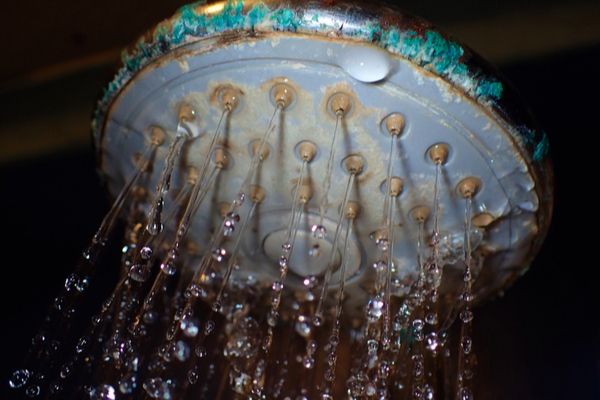Turns out Hitchcock isn’t the only reason to fear your shower. Potentially harmful organisms, known as mycobacteria, could be living in your showerhead.
Mycobacteria are capable of causing nontuberculous mycobacterial (NTM) lung infection — and showerheads in particular have been implicated in transmission of the disease. The organisms exist naturally in soil and water, but infection occurs through inhalation. “The concern about the showerhead is that it does what we call aerosolize, so it makes it in the air. We just breathe in the shower, and you would potentially be breathing in these organisms, and that’s how they would get into the lungs,” said Dr. Barbara Keber, MD, chair of family medicine at Northwell Health’s Glen Cove Hospital in New York.
The pressure and warmth of a showerhead makes it ideal to blast bacteria-containing water particles into the air.
According to a recent study by the American Society for Microbiology, mycobacteria were abundantly found in a samples of biofilms — the slimy collections of microorganisms — living in showerheads across the United States. Researchers analyzed biofilms from 656 households across the United States and Europe and found that the type of water and use of chlorine disinfectants affected the types of bacteria prevalent in showerheads. It’s important to note that well water had lower chances of mycobacteria when compared to municipal water, while metal showerheads contained more mycobacterium than plastic ones.
Geography was also deemed to be a significant factor. Southern California, Florida, Hawaii, and New York City were deemed “hot spots” for NTM lung disease, although the authors admit they don’t fully understand how these “hot spots” develop.
“We found significant correlations between the abundances of these mycobacteria found in showerheads sampled across the United States and NTM lung disease prevalence,” wrote the study authors. Symptoms of NTM lung infection include chronic or recurring cough, weight loss, fever, and loss of energy.
You’re likely tempted to go and clean your showerhead right now. That’s probably a good idea, but you also shouldn’t get too freaked out over so-called “showerhead sickness,” either.“It’s hard to make large overreaching generalizations where the number of cases… is so small. It’s a little bit tricky in terms of generalizing that to all showerheads kind of thing. I think we want to be careful about making that generalization,” Keber said. The study demonstrates a correlation between the presence of showerhead mycobacteria and NTM lung disease, but doesn’t prove that one is causing the other.
Studies on mycobacteria in showerheads have gotten a lot of press in the past decade. Nearly every study comes with a flurry of media attention, and for good reason. Showers are intimate; the water is on our face and in our eyes and mouths. We associate it with cleanliness, and it’s understandably unnerving to find out your showerhead is actually filled with bacteria, but the fact is that most people are unlikely to get sick from mycobacteria in showerheads. Certain susceptible populations do need to be more vigilant, though.
“There is usually an underlying immune system problem to create the risk for [mycobacterium] infection (like COPD) or other immune problems like HIV,” said Dr. Len Horovitz, a pulmonary specialist at Lenox Hill Hospital in New York City.
In fact, anyone with an underlying lung condition or infection should be aware that they’re at increased risk for contracting an NTM lung infection. Fortunately, notes Horovitz, infections caused by mycobacteria are all “treatable and curable.”
To take preventive measures in your home, treat showerheads like other fixtures in your bathroom. Clean them at semi-regular intervals and replace when necessary. You can easily and inexpensively clean your showerhead by soaking it in a solution of white vinegar and water. White vinegar is acidic enough that it can work as an antibacterial agent.
Heat and moisture are both prominent factors for the growth of bacteria, which is why showerheads can provide a haven for them. But, Keber notes, other areas in the house can also be prone to these conditions. “Sponges and rags are particularly problematic,” she said. Coffee machines are also a likely place for bacteria to grow and should also be cleaned with a vinegar solution from time to time.
Despite any concerns about that slimy showerhead, the germiest places in your house are also the ones that are most obvious, like kitchens, toilets, and sinks, for example. “The things in the household that have some of the highest levels of bacteria have shown to be things like the TV remote, which probably most people don’t think about, your telephone receiver, any kind of surfaces in your bathroom are obviously prone to having increased levels of bacteria — so those need to be cleaned well on a regular basis,” Keber said.
—
Photo Credit: David Cardinez / Shutterstock.com
